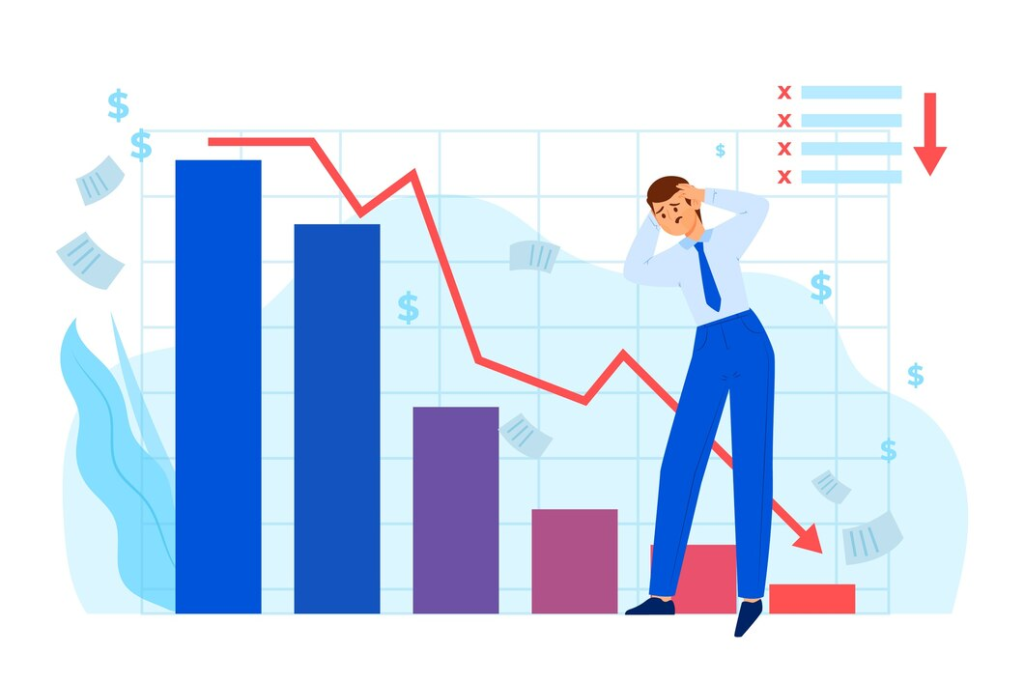There are investors who enter the stock market with high hopes that they will be soothed over the turmoil of time, with patience and long-term thinking, which ultimately prevents them from winning huge sums of money. True enough, there lies history to show that not all stocks are alike. A specific group of stocks—those with low market value and high volatility—has consistently underperformed, leading to negative annual returns for over six decades. This reality poses a significant risk for investors who may unwittingly include these stocks in their portfolios.
We continue in this article by looking at the nature of the worst stocks to invest in; it will primarily dwell on small-cap stocks with business models that are not well or rightly defined. Understanding historical data and how stocks behave in the market brings clarity on which stocks to avoid, with discussion on types of detrimental stock picking. Risks associated with penny stocks also significantly fall under this category of detrimental stock picking.
Knowing the pitfalls of those terrible investments is important to avoid the worst stocks to invest in. You can now make smart decisions, avoiding bad investments and concentrating on promising ones to secure your portfolio.

Bad Investments: Characteristics
Small-Cap Stocks and Volatility
Small-cap stocks-that is, those with the lowest market capitalizations-often attract investors due to growth prospects. There is, however a rather unsettling historical pattern; that is, high volatility is combined with negative return performance for these stocks. The joint evidence of low market value and high volatility makes the investment landscape precarious, so these stocks are more sensitive to market movements and the business cycles.
Unsecured Business Models
Investment in companies with unclear, uncertain business models is very reckless. Such companies have a non- stable, non-solid revenue flow and may not even create a proven track record; this brings about a scenario of shakiness as well. Many people get lured into easy money making and get stuck in this downward spiral.

Historical Performance: A Case Study Since JFK
Underperformance
A not-so-encouraging fact is that a few specific stocks have returned below zero numbers from the Kennedy administration. There is a cluster of small-cap, mostly those who have never been able to generate a profit over decades. The irony of it is that these stocks always disappoint their investors, and they are listed among the worst stocks to invest in.
Impact of Market Trends
Market trends are significant drivers of the relative performance of these stocks. Over the last few years, volatility in these low-value stocks has often amplified the pain of losses. As negative broad market trends set in, such stocks tend to hit new depths, deepening the destruction of investors.
The Trap of Penny Stock
What Is A Penny Stock?
Penny stocks are also known as shares that trade at less than $5. When the price is that low, it might be very attractive; however, risk is what makes all other factors irrelevant. Many such penny stocks represent companies with weak financials or dubious business practices.
They are highly likely to fail and become worthless.
Risks of Penny Stocks
Investing in penny stocks is almost like betting. There is an absolute case of liquidity with a high possibility of manipulation that may accrue significant losses. In addition, any promise held by the investment of high returns is mostly an illusion since most penny stocks will never pick up, nor be proven to be successfully viable.
Quotes on Risk
As Nassim Nicholas Taleb has famously said, “The good is mostly in the absence of the bad.” The phrase rings so clearly when speaking of penny stocks: often, it is more important to avoid some bad ones than it is to seek some good ones.
Important Takeaways on Avoiding the Worst Stocks
1. Concentrate on Well-Established Companies
Once creating a portfolio, it would be best to include blue-chip stocks from stable companies with sound business models. As these usually have lower volatility and a more predictable return, long-term investors might be able to enjoy investing in such an asset.
2. Do Your Due Diligence
Always do your homework on the stock before investing in it. Analysis of the financial statements, market position, and industry trends will allow you to spot some warning signs of a bad investment.

3. Avoid High Volatility
High volatility is a major warning sign that something is amiss. Any stock with gyrating prices without clear upside is a potential recipe for disaster, especially when coupled with a low market capitalization.
4. Steer Clear of Penny Stocks
Penny stocks should always be avoided unless you are a seasoned trader who can tolerate the potential pitfalls that come with the territory. The prospect of a blown account far outweighs the small chance of getting rich quick for most investors.
Conclusion
While competing for investment success, you would realize that there also exist worst stocks to buy. Over decades, they have proven to be a detriment to investors. With historical data clearly outlining how those terrible stocks underperformed steadily, a long-term mentality may not help you protect your investments.
Small-cap stocks and penny stocks can both be understood and avoided in light of their pitfalls, thereby making one make wiser decisions for stability and growth. Keep an eye out for established companies, do your research, and tread cautiously around high volatility. This will guide your portfolio into the correct direction while avoiding the adverse impacts of the worst stocks to buy. Your journey of investing can be very enjoyable when considering these financial traps.